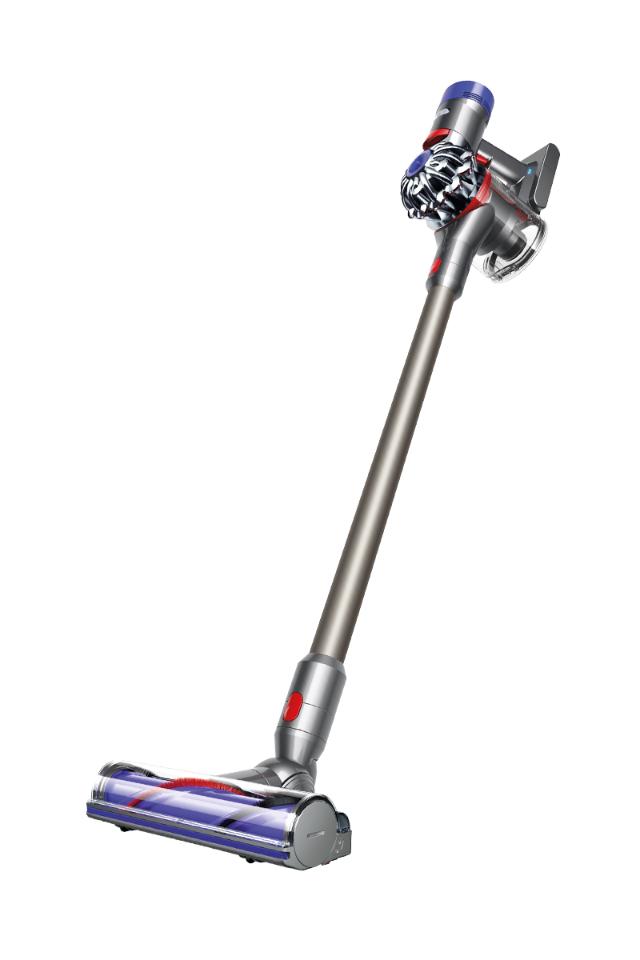Dyson sweepers are popular for their efficiency and advanced features. Yet, like any device, they may face issues.
Understanding Dyson sweeper troubleshooting can save you time and money. Common problems include the sweeper not turning on, losing suction, or making strange noises. These issues can often be fixed with simple solutions. Knowing how to troubleshoot can keep your sweeper running smoothly.
This guide will help you identify and fix common problems. Keep your Dyson performing at its best with these easy troubleshooting tips. Let’s dive into the details and keep your home clean with a well-functioning Dyson sweeper.

Credit: thevacuumwizard.co.uk
Common Power Issues
Struggling with power issues in your Dyson sweeper? You’re not alone. Common power problems can often be resolved with simple troubleshooting steps. Let’s explore some frequent power issues and their solutions.
No Power
If your Dyson sweeper won’t power on, don’t panic. First, check if it’s properly plugged into the outlet. Ensure that the outlet is functioning by testing it with another device.
- Verify that the power switch is turned on.
- Inspect the power cord for any visible damage.
- If using a cordless model, ensure the battery is properly installed.
Sometimes, the sweeper might have a tripped reset button. Check the reset button located near the power cord or on the main unit. Press it to reset the machine.
Battery Not Charging
A common issue for cordless models is the battery not charging. Here’s how to troubleshoot:
- Check that the charging cable is securely connected to both the charger and the sweeper.
- Ensure the charger is plugged into a working outlet.
- Inspect the battery for any visible damage or corrosion.
If the battery still won’t charge, try the following:
- Remove the battery and clean the contacts with a dry cloth.
- Let the battery cool down if it’s too hot.
If none of these steps work, the battery might need replacement. Always use genuine Dyson parts for replacements to ensure compatibility and safety.
Suction Problems
Experiencing suction problems with your Dyson sweeper can be frustrating. Whether you are dealing with weak suction or no suction at all, understanding the root cause is key to fixing it. Let’s explore some common issues and their solutions.
Weak Suction
If your Dyson sweeper has weak suction, several factors might be causing it. Here are some common reasons and tips to fix them:
- Clogged Filters: Dirty filters can reduce suction power. Clean or replace them regularly.
- Blockages: Inspect the hose and brush bar for debris. Remove any obstructions.
- Full Bin: An overfilled bin can decrease suction. Empty it frequently.
- Worn Brush Bar: Check if the brush bar is spinning properly. Replace if necessary.
By addressing these issues, you can often restore your Dyson’s suction power.
No Suction
If your Dyson sweeper has no suction at all, the problem might be more serious. Consider these potential causes:
| Issue | Solution |
|---|---|
| Disconnected Hose | Ensure the hose is securely attached at both ends. |
| Motor Issues | Listen for unusual noises. If the motor is not running, seek professional help. |
| Severe Blockages | Inspect all parts for severe blockages. Use a straightened coat hanger to dislodge debris. |
| Electrical Problems | Check for tripped circuit breakers or blown fuses. Ensure the sweeper is plugged in properly. |
If these steps do not resolve the issue, contact Dyson customer support for further assistance. Maintaining your Dyson sweeper can help avoid suction problems. Regular cleaning and inspection are key to keeping it in top condition.
Brush Bar Not Spinning
A Dyson sweeper is a valuable tool for keeping your home clean. But what do you do when the brush bar stops spinning? This issue can affect the sweeper’s performance. Let’s explore common reasons behind this problem.
Obstructions
Obstructions can cause the brush bar to stop spinning. Check for tangled hair or debris in the brush bar. Remove the brush bar and inspect it closely. Use scissors to cut away any tangled hair. Ensure no debris is blocking the brush bar.
Motor Malfunctions
Motor malfunctions can also affect the brush bar. The motor powers the brush bar. If the motor is faulty, the brush bar will not spin. Listen for unusual sounds from the motor. Check for any burning smell. These signs indicate motor issues.
In some cases, the motor belt may be worn out. A worn belt can prevent the brush bar from spinning. Inspect the belt for any damage. Replace the belt if necessary. Ensure the new belt is installed correctly.

Credit: www.youtube.com
Unusual Noises
Dyson sweepers are known for their efficiency and reliability. Yet, unusual noises may indicate a problem. Identifying these sounds can help you troubleshoot your Dyson sweeper effectively.
Rattling Sounds
Rattling noises often come from loose parts. Check the brush roll. It might be misaligned or damaged. Inspect the filters. Debris could be stuck inside. Tighten any loose screws or parts. These steps usually resolve rattling noises.
Whistling Noises
Whistling sounds suggest an airflow issue. Check for blockages in the hose or attachments. Clean them thoroughly. Ensure the seals are tight. A damaged seal can cause air leaks. Replacing the seal might fix the issue. Proper maintenance can prevent whistling sounds.
Overheating
Dyson sweepers are known for their quality and performance. But sometimes, they may overheat. This can be due to several reasons. Understanding and fixing these issues can help maintain your sweeper’s efficiency.
Blocked Airflow
Blocked airflow is a common cause of overheating. Dirt and debris can clog the filters and pathways. This restricts the airflow, causing the motor to work harder. Clean the filters regularly to ensure smooth airflow. Check for blockages in the hose and attachments as well. This simple step can prevent overheating.
Motor Overload
The motor can also overheat if it is overloaded. This happens when the sweeper is used on thick carpets or heavy debris. The motor strains to handle the extra load. To avoid this, adjust the settings based on the type of surface. Do not use the sweeper on surfaces it is not designed for. Regularly check the brush bar and remove any tangled hair or threads.
Battery Life Issues
Dyson sweepers are known for their powerful performance and innovative design. But like any device, they can encounter issues. One common problem is battery life issues. Whether your sweeper has a short run time or needs a battery replacement, understanding these issues can help you keep your Dyson in top shape.
Short Run Time
If your Dyson sweeper is running out of power quickly, it could be due to several reasons. First, check if the battery is fully charged. Sometimes, a partial charge can cause a reduced run time. Ensure your charger and power outlet are working properly.
Another reason could be the battery’s age. Over time, batteries lose their capacity to hold a charge. If your sweeper’s battery is old, it might be time to consider a replacement.
Battery Replacement
Replacing the battery in your Dyson sweeper can restore its performance. Before you begin, make sure you have the right replacement battery. Refer to your sweeper’s manual for the correct model number.
To replace the battery, turn off the sweeper and unplug it. Locate the battery compartment, usually at the base of the handle. Remove the old battery and insert the new one. Make sure it is securely in place before closing the compartment.
Once the new battery is installed, charge it fully before use. This ensures maximum efficiency and longer run times for your Dyson sweeper.
Dustbin Problems
Dealing with dustbin problems on your Dyson sweeper can be frustrating. A malfunctioning dustbin can reduce your cleaner’s efficiency. Understanding common issues and their solutions can save time and effort.
Dustbin Not Sealing
If the dustbin is not sealing properly, dirt and dust can escape. This reduces the vacuum’s performance. Check the rubber seals for wear or damage. Clean them with a damp cloth if dirty. Replace them if they are damaged. Ensure the dustbin clicks into place correctly. Sometimes, debris can block it from sealing.
Difficult To Empty
Emptying a Dyson sweeper’s dustbin should be simple. If it’s difficult, follow these steps:
- Ensure the vacuum is turned off and unplugged.
- Press the red release button to detach the dustbin.
- Hold the dustbin over a trash can.
- Press the release button on the dustbin to open the bottom door.
If the door doesn’t open easily, check for blockages. Clear any clumps of dirt or hair. Clean the dustbin regularly to avoid buildup. For stubborn dirt, rinse the dustbin with water and let it dry before reattaching.
Filter Maintenance
Maintaining the filter in your Dyson sweeper is crucial for optimal performance. Regular maintenance ensures your device functions efficiently. Let’s look at how to clean and replace the filter.
Cleaning The Filter
First, remove the filter from the sweeper. Check your model’s manual for specific instructions. Once removed, rinse the filter under cold water. Do not use any soap or detergent. Gently squeeze out the water. Repeat until the water runs clear.
Let the filter air dry for at least 24 hours. Make sure it is completely dry before reinserting it. Never use a hairdryer or other direct heat sources. This may damage the filter. Clean the filter every 1-3 months to keep your Dyson running smoothly.
Replacing The Filter
If cleaning does not improve performance, it may be time to replace the filter. Check your Dyson model for compatible filters. Purchase a new filter from an authorized retailer. Follow the manual to remove the old filter.
Insert the new filter securely. Make sure it fits properly. Replacing the filter ensures your sweeper works efficiently. It also helps maintain air quality in your home. Regular replacement every 6-12 months is recommended.
Following these simple steps will keep your Dyson in top shape. Regular filter maintenance is key.

Credit: www.dyson.com
Frequently Asked Questions
Why Is My Dyson Sweeper Not Turning On?
Check if it’s plugged in and the power outlet works. Ensure the battery is charged.
How Do I Clean The Dyson Sweeper Filter?
Remove the filter, rinse under cold water, and let it dry completely before reattaching.
Why Is My Dyson Sweeper Losing Suction?
Empty the dust bin, clean the filters, and check for blockages in the hose and brush bar.
How Often Should I Replace The Dyson Sweeper Filter?
Replace the filter every 6-12 months, depending on usage. Check the manual for specific recommendations.
What Should I Do If My Dyson Sweeper Is Making A Loud Noise?
Check for blockages in the brush bar or hose. Clean or replace parts if needed.
Conclusion
Regular maintenance keeps your Dyson sweeper running smoothly. Addressing common issues promptly saves time. Always check for blockages and clean filters regularly. Replace worn parts to ensure efficiency. Simple troubleshooting steps can prevent bigger problems. Keep your sweeper in top shape with these tips.
Happy cleaning!





